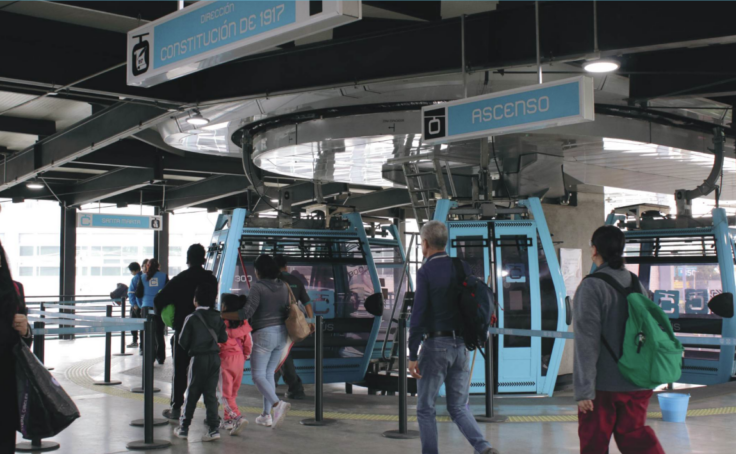October 09, 2024
Mexico City’s Cablebús Shows Us the Potential of Urban Cable Cars
Modern electric cable car systems have been expanding as sustainable and accessible mobility options over the past few decades, particularly in cities with neighborhoods in challenging terrains.
Access more details on the system’s impact in this presentation from ITDP Mexico.
Many cities in Latin America with mountainous geographies have been investing in cable cars as a popular solution to connect to public transport corridors and serve populations where traditional road vehicles might have trouble. The Metrocable in Medellín, Colombia (opened in 2004) and Mi Teleféricos in La Paz-El Alto, Bolivia (opened in 2014) are perhaps two of the most recognized and well-used examples of systems in the region that have become essential parts of their urban fabrics.
These systems have also served as key references for Mexico City’s own implementation of its Cablebús lines, which began operation in 2021. ITDP Mexico, in collaboration with the Inter-American Development Bank (IDB), recently developed an analysis of best practices and consolidated outcomes from the planning and development of Cablebús to demonstrate the impacts that moden cable car systems can have for cities across the region.

Overall, a key takeaway is that urban cable cars can be a sustainable, reliable, and efficient transport solution, but their success depends on the ability of the system to meet demand and the capacity of cities to effectively operate them. So cities need to develop comprehensive strategies, as with traditional transit systems, that integrate service planning, infrastructure construction, and connections with surrounding environments. See more in ITDP Mexico’s presentation in Spanish.
Ultimately, the impacts of Cablebús just a few years in are becoming clear. Cablebús Lines 1 and 2 have a daily ridership of more than 100,000 users, and Line 1 alone has managed to reduce travel times by almost 45 percent. In addition, a marginal decrease in the costs of trips was identified by many users. From a climate perspective, this electric system is estimated to have helped reduce 18,569 tons of CO2 emissions between 2021 and 2023 by mitigating the use of motor vehicles. Critically, the employment, health, education, and leisure opportunities that riders were able to access within an hour of travel were doubled, and in some cases tripled, according to surveys.

The Cablebús project was also accompanied by street interventions that are helping to improve local environments and rehabilitate public and commercial spaces near its stations. In addition, the system has improved accessibility to destinations that cater to caregivers and families, such as food markets, educational centers, and recreational spaces. For these systems to truly be effective, they need to reflect regional contexts and the unique needs of the transit-dependent populations they aim to serve.
Investing in these systems in cities with relevant geographies can fill the gaps of traditional transport while creating a myriad economic and environmental benefits that enhance the quality of life of all residents.
